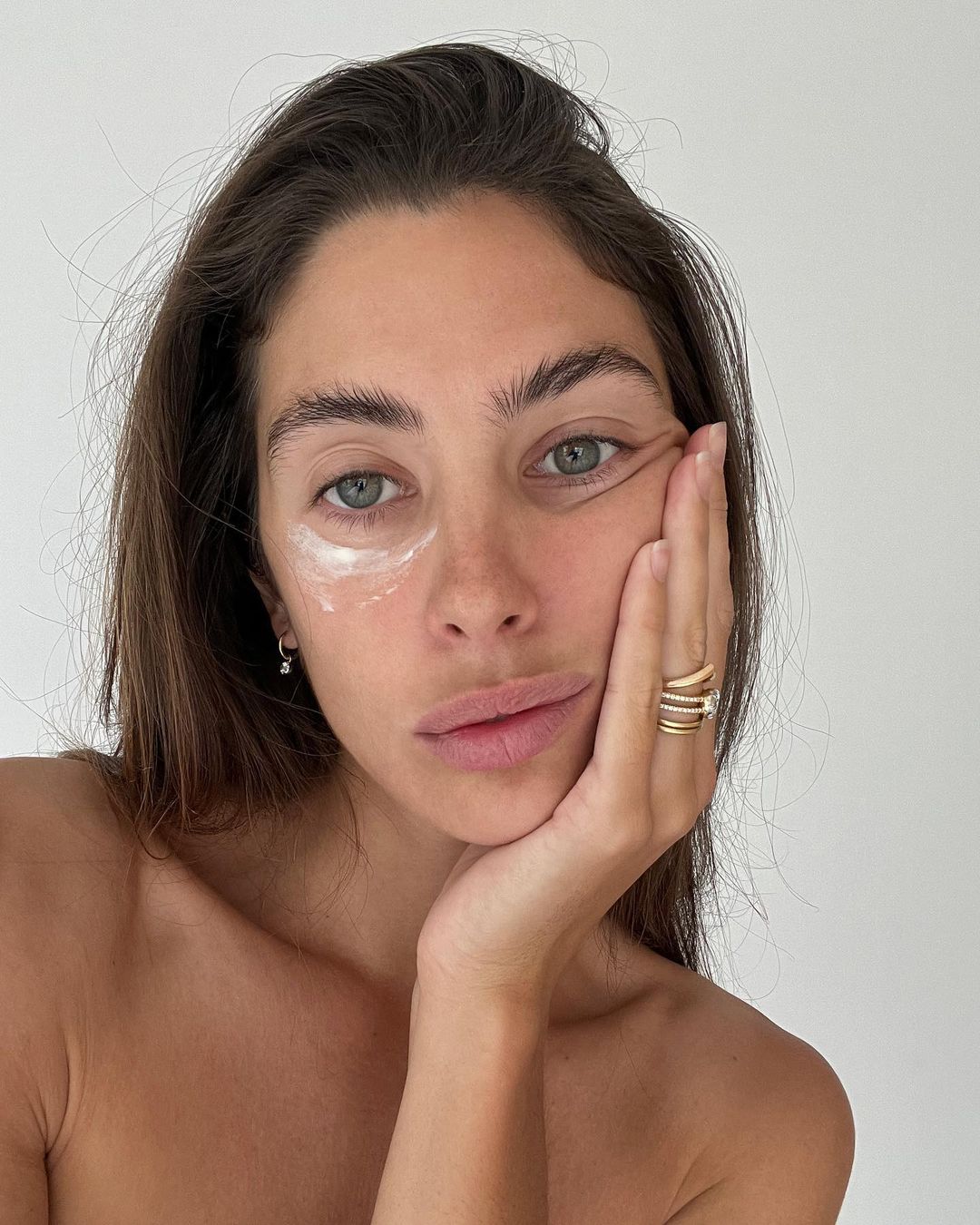This Underrated Beauty Tool Is One of the Easiest Ways to Transform Your Skin


Over the course of a few years, I've had countless opportunities to overcome my fear of needles for the benefit of my health, and I've recently resolved to do so in the smallest possible way: for beauty. (As of now, there's no plan for cosmetic surgery on the horizon.) Micro-needling is one of the ways I'm planning on continuing to improve my skincare routine. The more I've learned about the treatment, the more I've wondered why it's so painfully underrated among my fellow skincare lovers.
That's why, in true beauty-editor fashion, I've set out to share my findings with Who What Wear's audience in hopes of quelling hesitation and dispelling any unfortunate rumors you may have come across, with the guidance of a skincare expert. If that piques your interest, you're in luck! Keep scrolling to discover our guide to the best tips, tricks, practices, and products for all things related to micro-needling tools.
What Is Micro-Needling?
We reached out to Mila Davis, a Skin to Smile board-certified aesthetician with over 20 years of experience in the beauty industry, for the ins and outs of the transformative skincare tool. "Micro-needling is a cosmetic procedure that involves using a device with ultra-fine medical-grade needles to create tiny perforations in the skin, promoting collagen production and improving skin texture," she tells us. According to Davis, the most important things to consider when shopping for a micro-needling tool are whether it has adjustable needle lengths to accommodate different skin areas, quality, whether it's made of sterilizable materials, and your own experience with micro-needling.
Micro-needling can be helpful in addressing specific skin concerns by causing micro-injuries to the skin, which in turn stimulates the body's natural healing process while promoting collagen and elastin production. "This process helps reduce the appearance of fine lines and wrinkles, improve skin texture, and minimize scars," Davis adds. "Additionally, micro-needling improves the absorption of topical skincare products, allowing for better penetration of active ingredients and leading to overall skin rejuvenation and a more youthful appearance." It should be noted, however, that micro-needling comes with a bit of a learning curve.
Davis recommends spacing out micro-needling sessions anywhere from four to six weeks for in-office procedures, which are notably more intensive and require a longer recovery time. This allows time for the skin to heal and for the production of collagen. At-home micro-needling treatments are often safe enough to use one to two times a week for a designated time period, depending on the length of the needles and whether the product has a battery-operated mechanic component.
Tips + Tricks
As with any skincare device, there are certain areas of the face that should be approached with caution or avoided entirely when using a micro-needling tool. Davis tells us these include the eyelids and the delicate skin around the eyes and lips. It should also be used carefully on bony areas, such as the forehead. "The skin in these areas is very delicate and thin and can easily be damaged by at-home micro-needling devices, resulting in bleeding, bruising, granulomas, discoloration, and infections," explains Davis. Before undergoing the treatment, always remember to thoroughly cleanse the skin (avoiding the use of abrasives such as scrubs prior to the treatment). When selecting a micro-needling tool, look for a device developed specifically for at-home use from a trusted brand.
"Always follow the manufacturer's instructions to avoid any unwanted consequences. Do not use the at-home device in areas of active infections, acne, or breakouts, as this can result in bacterial transfer and possible infections and granuloma formation," she advises. Needle length of the at-home devices should also be considered to avoid deep penetration of the skin's outer layer. Applying gentle pressure to avoid excess trauma on the skin and utilizing SPF on treated areas is key for effective and healthy use. When it comes to product recommendations, Davis doubles down on her advice to only purchase at-home devices from reputable brands.
Your product of choice should also have the ability to adjust the length of the needles for a customized experience. "The device needs to be manufactured from high-quality materials that are easy to clean, such as stainless steel," she tells us. It's also smart to evaluate the safety features of the product, ensuring that it includes built-in mechanisms to avoid excess pressure and an easy-to-clean design. When in doubt, look to reviews to help gauge a product's safety, effectiveness, and popularity. Keep reading for our expert- and beauty-editor-approved list of the best at-home micro-needling tools for a well-rounded skincare regimen.

Best Overall: StackedSkincare Microneedling Tool

This aesthetician-designed and -developed micro-needling tool delivers spa-like results at home by accelerating your skin's natural regeneration timeline and minimizing the appearance of dark spines and fine lines. Its steel needles with 0.2mm tips gently micro-exfoliate without damaging the skin for youthful-looking complexion.
Best Affordable Option: Sonia Kashuk Microneedle Facial Roller

Made with 0.25mm stainless steel needles by Sonia Kashuk, this must-have addition to your routine helps increase your skin's ability to absorb serums and moisturizers when used before applying your favorite skincare products. It's easy-to-use, quick, and highly effective.
Best Micro-Needling Pen: Beauty Ora Electric Microneedle Derma Pen System

If you'd like to take the guesswork out of micro-needling, give Beauty Ora's electric Microneedle Derma Pen a try. It has an adjustable needle head that varies in length (from 0.25mm to 2mm) and uses a built-in vibration mechanism for deep needle penetration for a pain-free experience with professional results.
More Micro-Needling Must-Haves

Regular use of this derma roller helps boost collagen production, reducing the visibility of scarring, premature skin aging, large pores, and dark circles. Its offered in three sizes (0.25mm, 0.5mm, and 1mm) for beginner, intermediate, and advanced users looking to improve their skincare regimen.

Skin Gym's noninvasive micro-needling tool features over 3000 dissolving needle tips made with hyaluronic acid and peptides that melt into the skin with every roll for a supple, youthful look. Simply use one to two times a week for five to 10 minutes across the face, neck, or décolletage to bring on the glow.

Acne, fine lines, wrinkles, and more have nothing on Beauty Ora's best-selling Microneedle Roller. It has extremely fine needles measuring 0.55mm that gently penetrate the skin enough to stimulate collagen and elastin production and helping to smooth uneven skin texture and color.

Some of the best facials I've had at home are the result of using the Glopro Microneedling Tool. Available in five stunning colors (I'm always partial to a classic white shade), the award-winning product helps to maximize skincare absorption, refine uneven texture, and smooth away fine lines and wrinkles in just 60 seconds a day.

The Microneedle Derma Pen System features fine needles in three sizes that gently penetrate the skin and promote collagen and elastin production. This derma pen has five speeds, an adjustable needle head allowing for a change in needle depth, and an electronic roller for fast and precise needle strokes.

Not all skincare devices offered at a high price point deliver high results, but this 14-carat gold-plated instrument does. It uses 260 ultra-fine needles crafted from medical-grade stainless steel while the gold naturally suppresses bacterial growth for easy cleaning.

Maya Thomas is an Associate Beauty Editor at Who What Wear. Her strong love for all things beauty, interior design, and fashion stems from a strong childhood interest in the fine arts. During a gap year spent in Paris studying the history of French fashion, she shifted her focus to English literature and journalism as a student at Loyola Marymount University. After graduating in May 2021, Maya began freelancing for Parade.com as a contributing commerce writer. When she's not writing, Maya spends her free time catching up on reading, perusing art galleries, and enjoying a night out at the ballet every now and then.